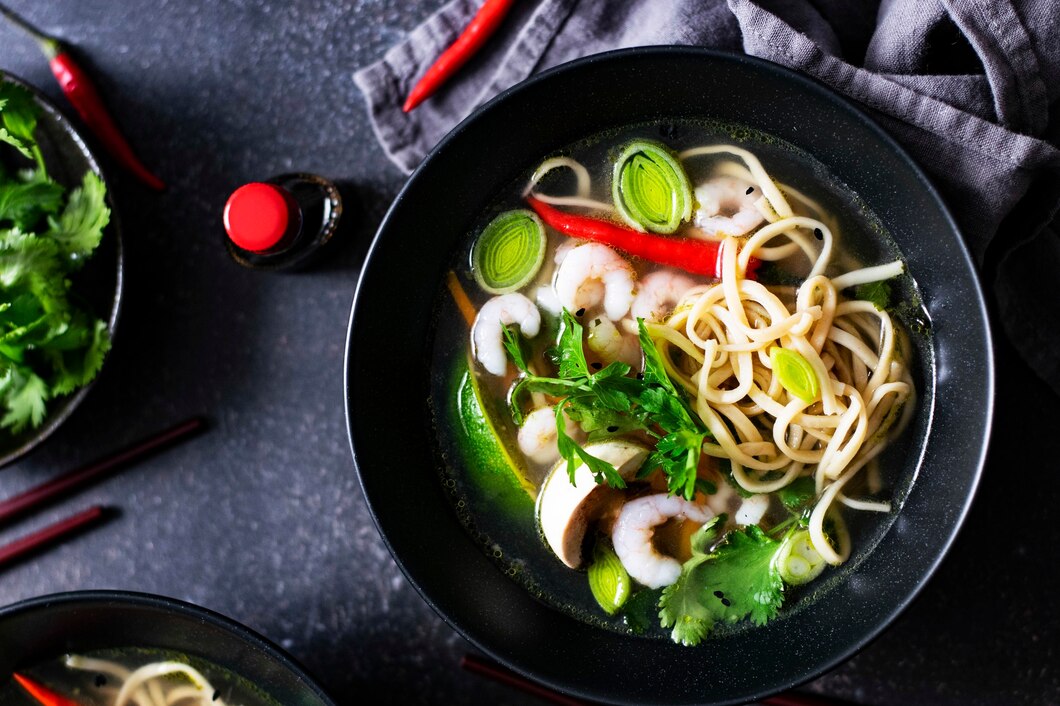Pho, the fragrant and flavorful noodle soup that has captured the hearts of food lovers around the world, is much more than just a delicious dish. It is a symbol of Vietnamese culture, history, and resilience. Despite its popularity, the origins of pho are often shrouded in mystery, with various theories regarding its beginnings. Here’s a closer look at the surprising origins of this beloved Vietnamese comfort food.
A Culinary Fusion
The story of pho is intertwined with Vietnam’s colonial past and the blending of culinary traditions. Although the exact origins are debated, many historians agree that pho began in the early 20th century in the northern regions of Vietnam, particularly Hanoi. It is believed to be influenced by French colonialism, which introduced the concept of beef and the use of stock-based soups.
The word “pho” itself is thought to be derived from the French word “feu,” which means “fire” and refers to the French dish “pot-au-feu,” a type of beef stew. This connection highlights how French cooking techniques were adapted into Vietnamese cuisine, leading to the creation of pho.
The Role of Chinese Influences
In addition to French influences, pho also draws inspiration from Chinese culinary traditions. Noodles, which play a central role in pho, are a staple in Chinese cuisine. The rice noodles used in pho, known as “bánh phở,” are similar to those found in various Chinese dishes. The combination of herbs, spices, and broth in pho is reminiscent of traditional Chinese soups, showcasing how Vietnamese chefs skillfully adapted and transformed these influences into something uniquely their own.
The Evolution of Pho
Pho began as a simple street food dish, primarily made with beef and served with a clear broth seasoned with spices such as star anise, cinnamon, and ginger. The dish gained popularity among workers and soldiers in the early 20th century, particularly in the bustling streets of Hanoi. As the demand for pho grew, various regional variations emerged, each with its distinct characteristics.
During the Vietnam War, pho became a symbol of national identity. As the conflict led to the displacement of many Vietnamese, the dish spread globally, with Vietnamese immigrants introducing pho to countries around the world. This expansion contributed to the evolution of pho, leading to the incorporation of different ingredients and styles, such as the popular chicken pho (phở gà) and vegetarian versions.
The Art of Pho Making
The preparation of pho is a labor of love, often involving hours of simmering beef bones to create a rich, flavorful broth. Fresh herbs like cilantro, basil, and lime are essential for garnishing, adding freshness and depth to the dish. Pho is typically served with various accompaniments, such as bean sprouts, jalapeños, and hoisin sauce, allowing each diner to customize their bowl according to their taste preferences.
Pho Today: A Global Phenomenon
Today, pho is celebrated not only in Vietnam but also around the world, with countless restaurants dedicated to this iconic dish. It has transcended its humble beginnings as street food to become a beloved comfort food for many. Pho is often enjoyed at breakfast but can be eaten at any time of day, making it a versatile dish that brings people together.
The surprising origins of pho reflect a rich tapestry of cultural influences and historical events. This beloved Vietnamese comfort food is a testament to the resilience and creativity of the Vietnamese people, who transformed various culinary traditions into a dish that resonates with millions. Whether enjoyed in a bustling Hanoi street or a cozy restaurant abroad, pho remains a warm reminder of home, culture, and the power of food to connect us all.








